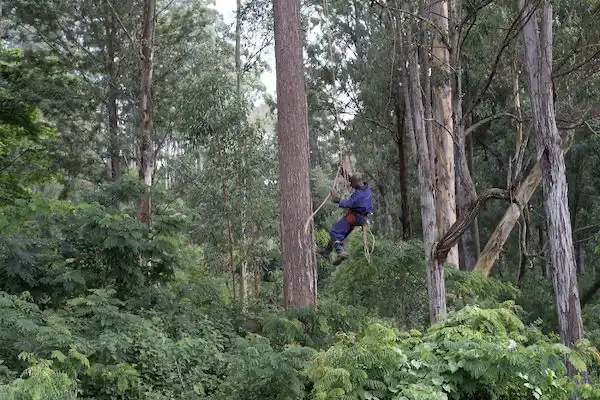A total of 57 institutions around the world share their expertise in a ground-breaking study which highlights the urgent need to protect the world’s forests from non-native pests amid climate change.
The study, led by Dr Iva Franić – who at the time of the research was a PhD student co-supervised by CABI’s Dr René Eschen – stresses an urgent need to limit tree pests and enhance the resilience of forest ecosystems in the face of rising temperatures.
Published in the journal Scientific Reports, the scientists – that also included CABI’s Dr Marc Kenis and Dr Hongmei Li – argue that by understanding the intricate relationships between climate, host species, and geography, stakeholders can develop strategies to protect the world’s forests and the invaluable benefits they provide.
The study involved an extensive survey of insects and fungi associated with dormant twigs of 155 tree species at 51 botanical gardens or arboreta in 32 countries across six continents. The researchers determined the relative importance of various factors in driving differences in tree-associated communities.
The results indicated that mean annual temperature, phylogenetic distance between hosts, and geographic distance between locations were the primary drivers of dissimilarities.
Of particular concern was the increasing significance of high temperatures on the differences observed in the studied communities, suggesting that climate change could directly and indirectly impact tree-associated organisms through shifts in host ranges.
The researchers also found that insect and fungal communities exhibited greater similarity when associated with closely related host species, implying that host range shifts might facilitate the emergence of new pests.
Additionally, dissimilarities among tree-associated communities increased with geographic distance, implying that human-mediated transport could facilitate the introduction of new pests into a forest.
Dr Franić, who now works at Swiss Federal Institute for Forest, Snow and Landscape Research WSL said, “The study’s findings demonstrated that climatic factors played a crucial role in shaping the composition of fungi, particularly saprotrophic and plant pathogenic fungi, as well as herbivorous insects associated with trees.
“Moreover, the study highlighted the importance of host-related factors, such as phylogenetic distance and wood density, in shaping these communities. Closely related host species were found to share more species of insects and fungi, suggesting a co-evolutionary relationship.”
The scientists suggest that geographic factors also played a significant role, with the distance between locations emerging as a critical driver of diversity. The study found distinct geographic structure within continents for both plant pathogenic fungi and herbivorous insects, indicating limited dispersal between locations. However, the exchange of plant material across continents could lead to the introduction of new pests and pathogens.
Dr Eschen, a co-author of the research, said, “The findings of this study provide valuable insights into the complex dynamics of tree-associated communities and emphasize the importance of proactive measures to safeguard forest health in the face of environmental challenges.
“As climate change and global trade continue to shape our world, understanding and predicting these changes will be crucial for the long-term sustainability of our forests.”
The scientists conclude by stressing that safeguarding tree-derived environmental and societal benefits will, therefore, depend on limiting the establishment of new forest pests and increasing the resilience of trees and forest ecosystems to climate change.
Read the paper: Scientific Reports
Article source: CABI
Image credit: CABI






